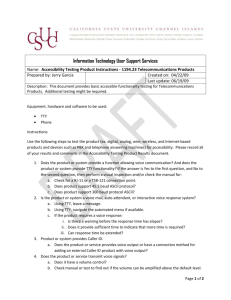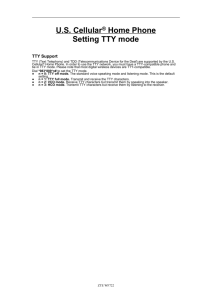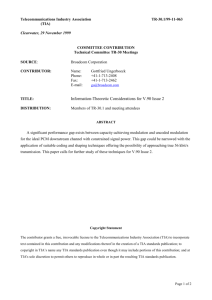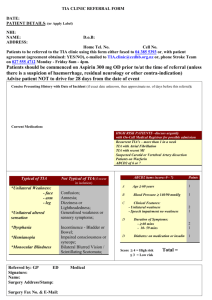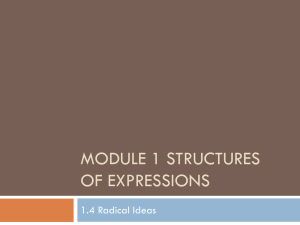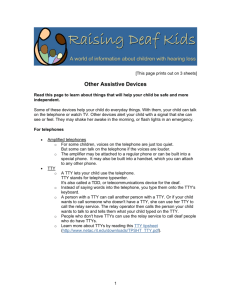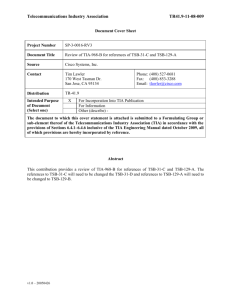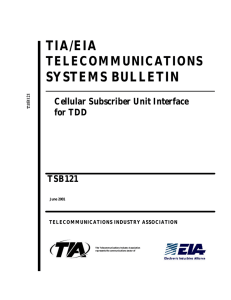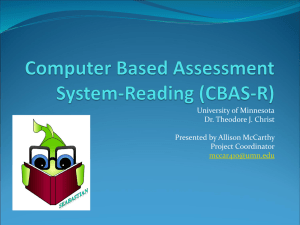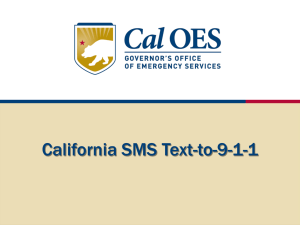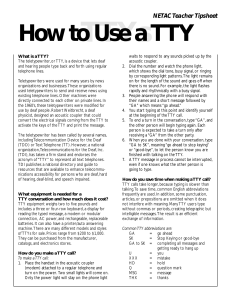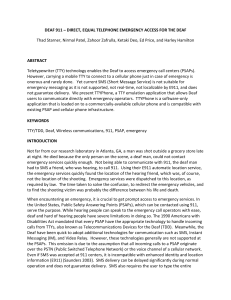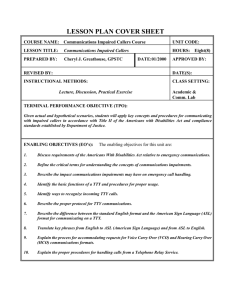10406035 User Requirements - Telecommunications Industry
advertisement
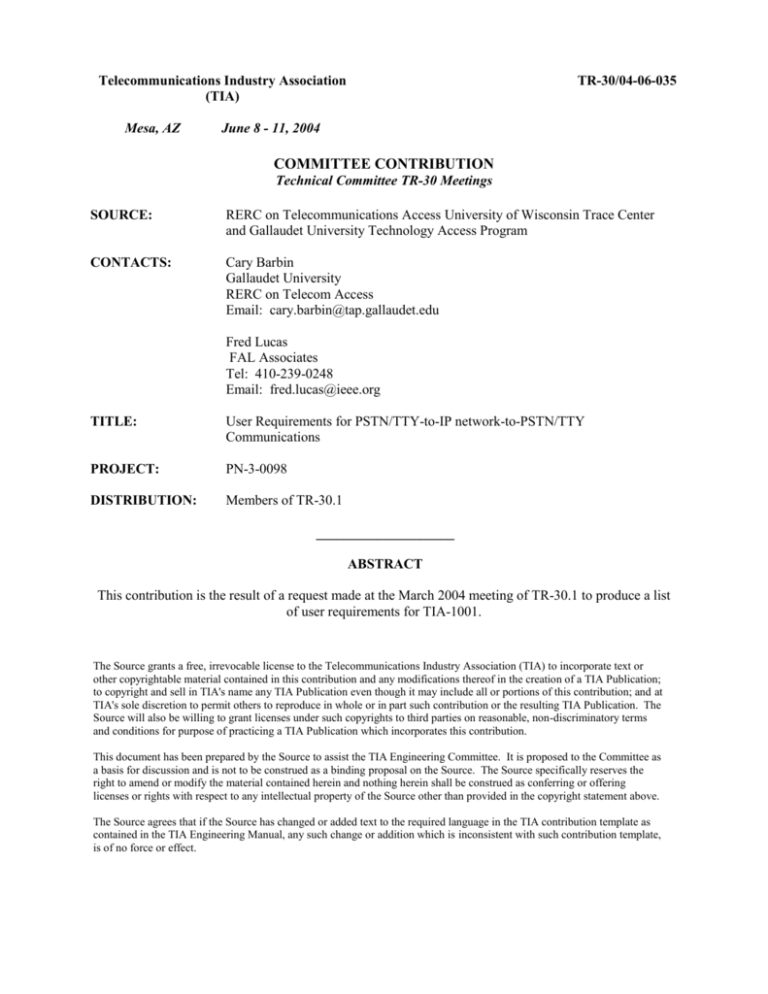
Telecommunications Industry Association (TIA) Mesa, AZ TR-30/04-06-035 June 8 - 11, 2004 COMMITTEE CONTRIBUTION Technical Committee TR-30 Meetings SOURCE: RERC on Telecommunications Access University of Wisconsin Trace Center and Gallaudet University Technology Access Program CONTACTS: Cary Barbin Gallaudet University RERC on Telecom Access Email: cary.barbin@tap.gallaudet.edu Fred Lucas FAL Associates Tel: 410-239-0248 Email: fred.lucas@ieee.org TITLE: User Requirements for PSTN/TTY-to-IP network-to-PSTN/TTY Communications PROJECT: PN-3-0098 DISTRIBUTION: Members of TR-30.1 ____________________ ABSTRACT This contribution is the result of a request made at the March 2004 meeting of TR-30.1 to produce a list of user requirements for TIA-1001. The Source grants a free, irrevocable license to the Telecommunications Industry Association (TIA) to incorporate text or other copyrightable material contained in this contribution and any modifications thereof in the creation of a TIA Publication; to copyright and sell in TIA's name any TIA Publication even though it may include all or portions of this contribution; and at TIA's sole discretion to permit others to reproduce in whole or in part such contribution or the resulting TIA Publication. The Source will also be willing to grant licenses under such copyrights to third parties on reasonable, non-discriminatory terms and conditions for purpose of practicing a TIA Publication which incorporates this contribution. This document has been prepared by the Source to assist the TIA Engineering Committee. It is proposed to the Committee as a basis for discussion and is not to be construed as a binding proposal on the Source. The Source specifically reserves the right to amend or modify the material contained herein and nothing herein shall be construed as conferring or offering licenses or rights with respect to any intellectual property of the Source other than provided in the copyright statement above. The Source agrees that if the Source has changed or added text to the required language in the TIA contribution template as contained in the TIA Engineering Manual, any such change or addition which is inconsistent with such contribution template, is of no force or effect. The following user requirements cover only analog TTY transmission that begins and ends on a PSTN but traverses over an IP network between PSTN connections. They are submitted to TR 30.1 for its work on TIA-1001, which covers only this aspect of TTY communications. The basis for this requirements list is experience with TTY communications and knowledge of consumer advocates’ desire to improve the functionality of text communications in the IP environment. It is also important that all IP network technologies (hardware and software) be designed to support this to facilitate re-use in different applications. To achieve this goal it will be important to convert TTY to IP text formats wherever possible, and not just consider it as an audio signal. 1. TTY calls must get through and be intelligible to same the degree that voice calls get through, including in conditions of heavy traffic. 2. TTY transmission accuracy must be maintained at 1% or less CER (which we will refer to as “text QOS”); system must be able to detect the character error rate and adjust as necessary to achieve text QOS. Adjustments may include (but are not limited to) redundancy of transmission and decrease in packet loss. 3. Character-by-character transmission and display must be supported. 4. There must be no more than a half second delay in passing through characters. 5. Any communications that do not terminate in another analog system must use IP text to transmit text over IP networks 6. Because TTY calls may be answered with just a few characters (e.g. HI GA, or 911 GA), loss of any characters at the beginning of the call are detrimental and methods (such as character buffering) must be used to retain initial characters. 7. TTY calls are sometimes answered by hearing people who answer in voice and then TTY; this situation must be accommodated without dropping the call. 8. Transfer of calls must not result in termination of the call or garbling of text. 9. Pausing/holding during a call is normal conversational behavior. Pausing (or silence) must not cause the call to be terminated or mode to be changed. 10. All aspects of call progress (pass through sounds on the line to the textphone – dial tone, ring, busy signal, network error tones, answered in voice, etc.) must be passed to the calling textphone OR displayed on phone if display is available. 11. The calling party must be able to generate Baudot tones before the call is answered in TTY. (to signal a TTY call to a hearing party answering) 12. Voice sounds must be passed through both ways while in a text mode for purposes of mixing voice and text, e.g., for voice carry-over and hearing carry-over. For the analog/PSTN side of the conversation, voice and text will need to be alternated; this is regulated by user behavior (saying or typing GA to signal turntaking). (Within fully IP network calls user requirement is simultaneous voice and text.) 13. Gateways must renegotiate the type of signal used if a different mode of textphone is detected during the call. 14. Automatic Number Identification and Automatic Location Identification or their IP counterparts must be supported for textphone calls.
